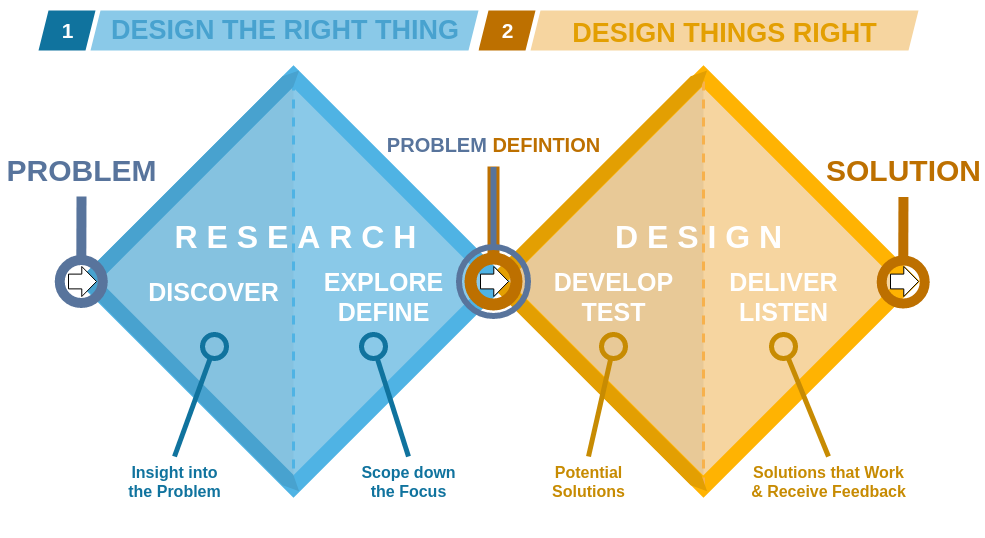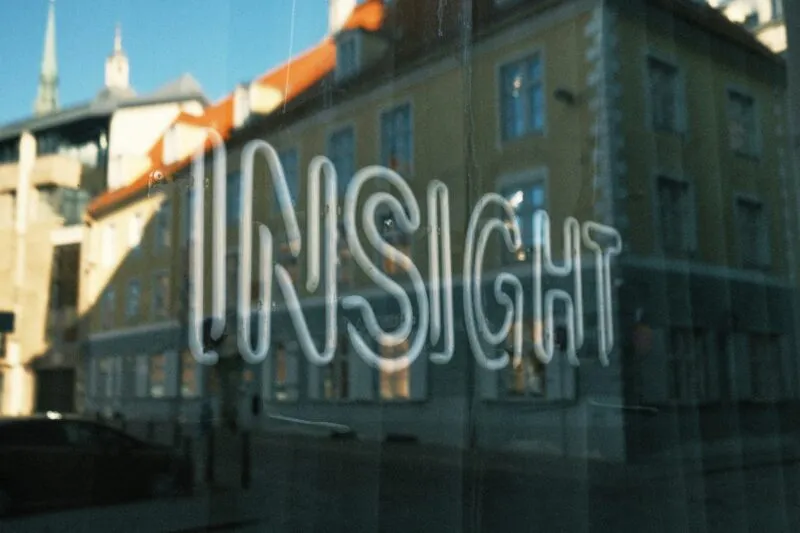Design thinking for non-designers
I used to believe that design thinking was intimidating and reserved for brilliant professionals who were charismatic and intelligent, intuitive and analytical, all at the same time. Design thinking was sticky notes, ‘war rooms’ and going from problem to solution in less than a week. Most of all, it was reserved for literal designers, who were responsible to creating digital and physical products.
I thought design thinking wasn’t for me, as a researcher, brand strategist, and comms planner. The 5-step design thinking process originally popularized by Hasso-Plattner Institute of Design at Stanford (d.school) looked like a framework for building “stuff”, with words like ‘prototype’ and ‘assess’.
Turns out, I just needed to see the design thinking process in a different way. Enter the Design Council’s ‘Double Diamond’ framework for innovation. The Double Diamond framework was originally developed through an in-depth study in which the Design Council evaluated the design processes within eleven major companies such as Lego, Starbucks and Microsoft.
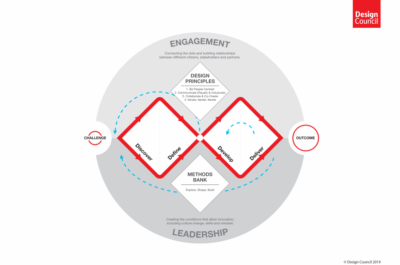
Turns out, most of these innovation-driven companies use a similar process:
- Discover. The first diamond helps people understand, rather than simply assume, what the problem is. It involves speaking to and spending time with people who are affected by the issues.
- Define. The insight gathered from the discovery phase can help you to define the challenge in a different way.
- Develop. The second diamond encourages people to give different answers to the clearly defined problem, seeking inspiration from elsewhere and co-designing with a range of different people.
- Deliver. Delivery involves testing out different solutions at small-scale, rejecting those that will not work and improving the ones that will.
But why bother using a design framework?
1. Provides structure to an often chaotic process
I love this framework because it visualises the goal of each step and uses language which is easy to understand, regardless of industry and job role. By highlighting where thinking needs to diverge and converge, stakeholders can easily align on the desired outcomes of each step in the process, see what is coming next and ensure an appropriate solution is reached at the end.
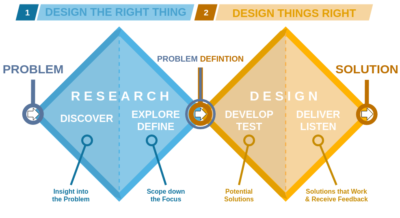
It also has clear points in which to seek stakeholder input. Each point of convergence illustrates a chance for teams to align on the outcomes of the previous two steps, interpret the findings and move forward together.
2. Identifies solutions that are aligned with organisational goals
By spending time identifying challenges and barriers faced by the organisation, the solutions developed through the second diamond are predisposed to achieving goals and growth.
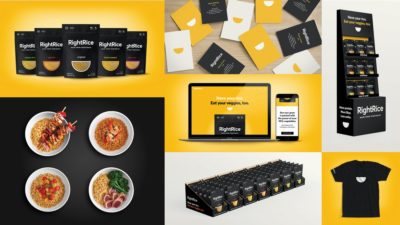
For example, IDEO used design thinking to build the RightRice brand from the ground up. The brand identity, packaging and messaging were designed to put the consumer at the core of the product, while also addressing organisational constraints like manufacturing, packaging cost and distribution efficiency.
3. Forces reflection and iteration
One of the hallmarks of design thinking is constant iteration, which can be a challenge when business moves as the speed of light. The key to making it work is documentation of each step throughout the process and centralising the insights, questions and learnings from each iteration. Design Council notes that some design-oriented companies in their studies used a repository to collect insights which could be shared internally or with external stakeholders, which has allowed for teams across the organisation to benefit.
For example, design, marketing and customer experience are closely tied at Starbucks. The Design Council reported in their evaluation study that seasonal offerings and campaigns are held up against the brand’s values and style guide to ensure each initiative supports overarching brand goals.
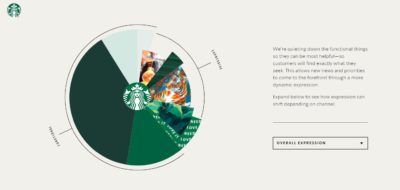
The brand uses an online workflow management tool where projects and concept developments can be tracked across the organisation, including any feedback or adjustments made along the way. The brand has even made their design ethos available to the public online. Tracking these changes is a valuable mechanism in learning from failures and ensuring future work is bigger and better than before.
